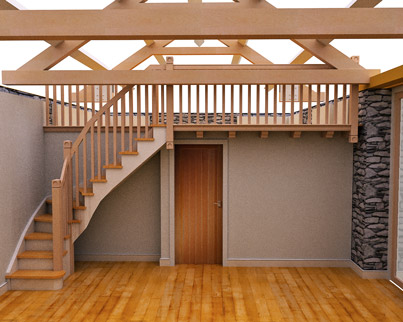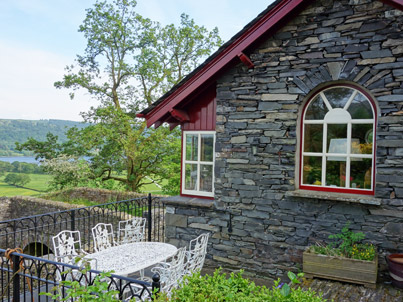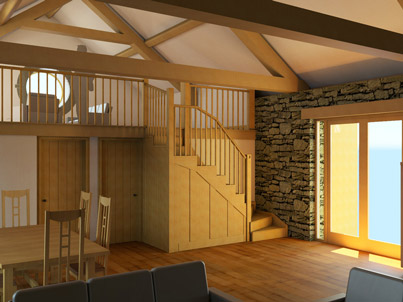PD Rights Removed?
Permitted Development rights for conversion of barns into dwellings do not currently apply within the Park
Householder PD rights are normally removed when a barn conversion Consent is granted (mostly since 1980s)
PD Not in Park

You might think that the area would run out of redundant agricultural buildings to convert but they seem to keep appearing and still hold charm for many people.
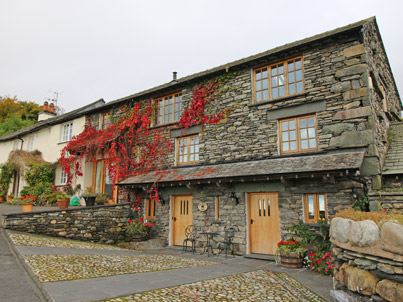
Barn conversion into dwelling near Hawkshead - the 'pentis' roof along the front was added but is a traditional feature
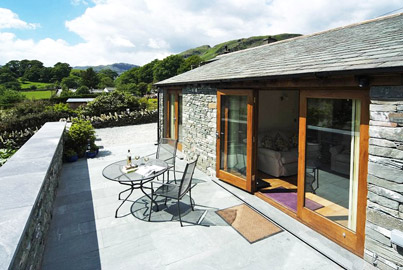
Unusual but very successful conversion of kennels into a letting property on a farm in Little Langdale
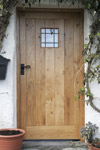
Resources
Best books on Lake District vernacular are:
Vernacular Architecture of the Lake Counties - a field handbook, by RW Brunskill
(Out of print)
Same book as above but re-issued with minor changes is:
Traditional Buildings of Cumbria, by RW Brunskill
Also out of print but still obtainable is:
Traditional Buildings & Life in the Lake District, by Susan Denyer
2014 but seems now out of print:
Arts & Crafts Houses in the Lake District by Matthew Hyde and Esme Whittaker
Barn Conversions
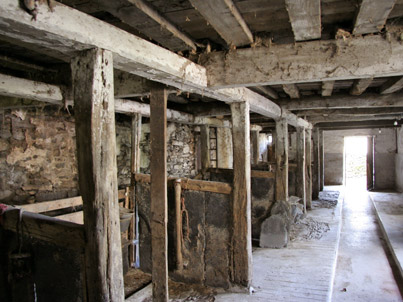
Barn lower floor before conversion near Windermere - this type of redundant barn with slate and oak partitions is becoming rare
Barns Generally
This is no scholarly research (see below for that) but just my observations from many years of working on barn conversions.
The barns of the central Lake District may appear all quite similar but in fact are seldom so. Stone for construction is heavy and difficult to transport and so will normally come from the nearest quarry, sometimes mixed with field 'cobbles' - rounded stones from a beck (stream) or cleared from the land. The higher the proportion of cobbles the greater the likelihood of instability over the centuries as rain washes out any earth packing within the wall, until the weight of the slate roof is all that provides sufficient friction to stop the whole wall tumbling down (something to bear in mind when propping a barn roof).
In some areas the local stone has no strata and can only be smashed into jagged pieces - not ideal for walling but needs must. You tend to see more mortar around such stones rather than a true drystone walling technique.
You also have to remember that the function of a barn has some bearing on the arrangement of the plan, height, construction and any openings. The barn and farm cottage were often part of the same structure.
The oldest barns I see in the central Lake District seem to date from 1646 onwards - i.e. that is the earliest date stone I have come across in a barn. However the roof timbers I would think are frequently much older. I have read that the permission of the Lord of the Manor was required to cut down construction timber and so old timbers were commonly recycled. You can occasionally find cruck frames from earlier buildings which may have stood on the ground, reused at higher level to support roof beams (purlins).
Stone was also reused - indeed it still is. It is a very flexible material although care needs to be taken when demolishing old walls for reuse that the clean outer stone is kept apart from any inner stone which has lime wash or mortar adhering.
Quoin (corner) stones seem to be largest in the oldest barns for a reason that I have never worked out.
'Barn' is often a misnomer, at times being used to describe stables, hay stores, accommodation, cow sheds, sheep sheds, kennels and all manner of outbuildings.
It is very common to find a barn with openings modified, moved or just blocked up as needs changed over the years - there are clues in straight joints in the otherwise random rubble stonework or an oak lintel (the beam above an opening) left in place.
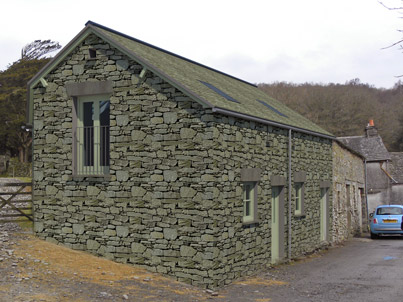
Small barn conversion for use as a holiday let near Hawkshead - exterior view (computer rendering of building model)
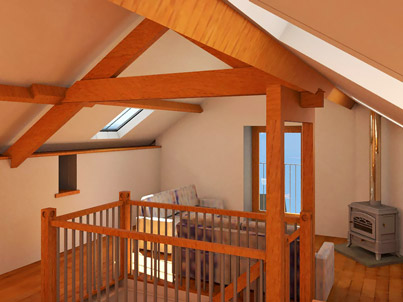
Small barn conversion for use as a holiday let near Hawkshead - interior view (computer rendering of building model)
Site Map
|
Planning Maze
|
|
Trade Gadgets
CDM2015
|
|


William Sutherland rias riba
Chartered Architect
Director
Cluan, Rydal Road, Ambleside LA22 9BA
Tel: 015394 34489
